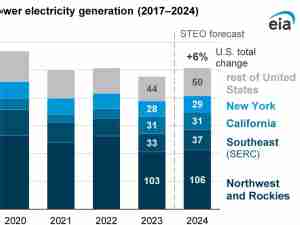Europe’s energy crisis upended power trading last year, driving Sweden to become the region’s top exporter after extensive outages in France’s nuclear reactor fleet.
Sweden sent 33 terawatt-hours to other nations in 2022, making it the No. 1 exporter for the first time, according to Entso-E data analyzed by Rystad Energy AS. The UK flipped to being a net power exporter for the first time, and was joined by Spain and the Netherlands.
Power trading in Europe was roiled as Moscow squeezed gas supplies to the region and the struggles to repair France’s aging nuclear plants turned the nation into the second-biggest importer. That crunch was eased by interconnectors that link national electricity grids, providing a safeguard against power outages.
“2022 was a reality check for many countries”, said Fabian Ronningen, a power markets analyst at Rystad. “You got all of these ‘what if scenarios’ where people were thinking about the situation of black outs in France.”
The turmoil in power markets has put the spotlight on infrastructure security and the importance of linking grids across the European Union.
“As all large scale infrastructure, they become point sources of risk via physical damage or cyberattacks” said Lisa Fischer, program leader for Climate Neutral Energy Systems at think tank E3G. “However the more networked the EU grid is, the more options we have to mitigate the risk.”
By 2030, the EU wants the 27 nations in the bloc to be capable of transporting 15% of their power output to neighboring countries.
“About half of EU member states are on track to achieving this,” said Fischer. “So this is on an upwards trajectory, but we need more efforts.”









